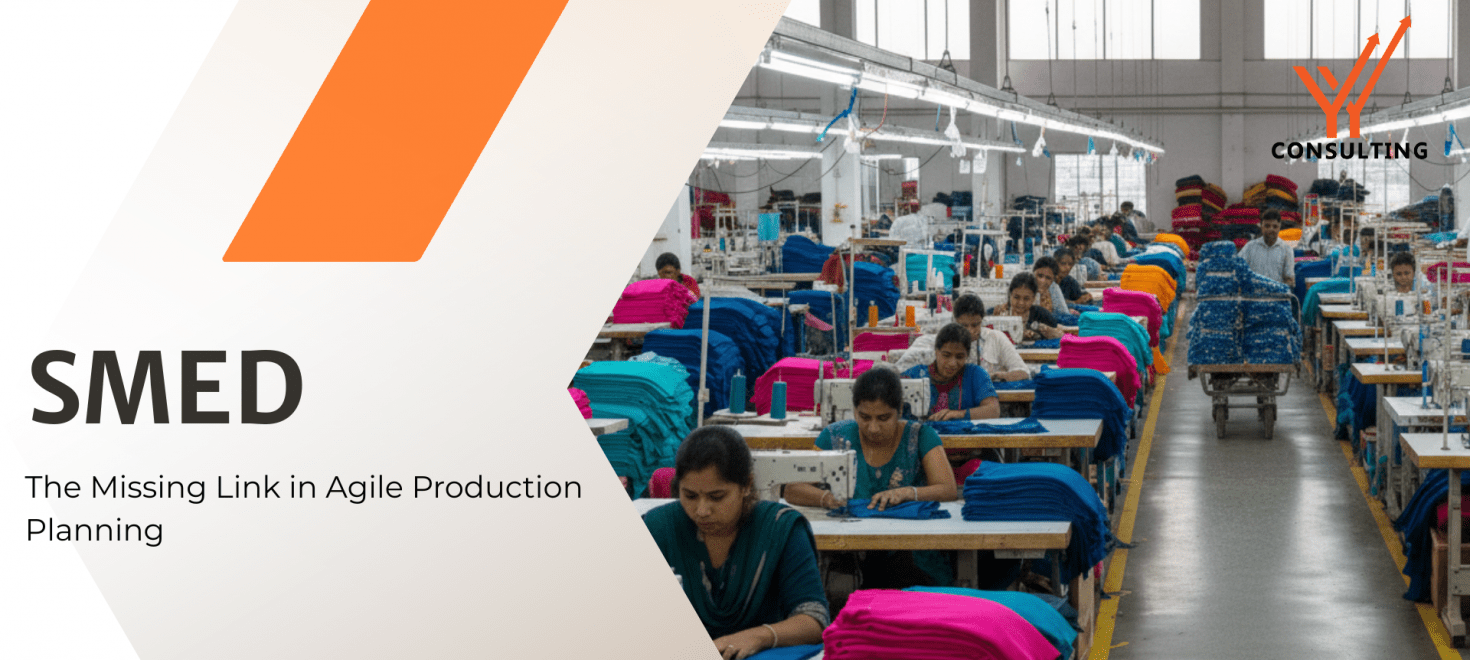How Bangladesh Can Build Faster, Flexible, and Future-Ready Apparel Factories
Introduction
The Bangladesh apparel industry has long been celebrated as the backbone of the country’s economy. Generating more than 84% of national export earnings and employing over 4 million workers, the sector has cemented the country’s place as the world’s second-largest garment exporter. From T-shirts and trousers to high-fashion outerwear, Bangladesh’s factories supply nearly every major international retailer.
But the rules of global apparel sourcing are changing rapidly. Brands no longer plan only for two main fashion seasons—Spring/Summer and Autumn/Winter. The rise of fast fashion, direct-to-consumer models, and e-commerce has created a “see-now, buy-now” reality, where new collections drop weekly and consumer demand fluctuates unpredictably.
In this environment, order patterns have shifted dramatically:
- Lot sizes are smaller—5,000 to 10,000 pieces instead of 100,000-piece runs.
- Lead times have compressed—45–60 days instead of 90–120 days.
- Style volatility has increased—buyers frequently demand last-minute style or color changes.
For Bangladesh, which still relies heavily on long production runs and rigid planning systems, these shifts expose a painful gap: How can factories remain profitable and responsive when changeovers are frequent, unpredictable, and costly?
The answer lies in SMED (Single Minute Exchange of Dies)—a lean manufacturing principle adapted to apparel that reduces changeover time, improves production planning, and allows factories to run multiple styles in the same line without major downtime.
What is SMED in the Apparel Context?
The concept of SMED was introduced by Shigeo Shingo in the automotive industry to minimize downtime between production of different car components. The core principle is to reduce setup or changeover time to single-digit minutes (less than 10 minutes).
In the apparel industry, while there are no “dies” in the traditional sense, changeovers are frequent and costly:
- Switching from one garment style to another in sewing lines.
- Adjusting cutting room markers and spreading systems for new fabrics.
- Reconfiguring finishing and packing sections for different SKUs.
Traditional Approach vs. SMED Approach
- Traditional Changeover: 4–8 hours per line, involving machine setting, attachment changes, operator retraining, and trial runs.
- SMED Approach: Segregating internal tasks (done when machines are idle) from external tasks (done while machines are running). By pre-preparing machines, aids, and layouts, factories can reduce changeover to under 30 minutes.
The outcome: more flexibility, less idle time, and higher output with the same resources.
Why SMED Matters for Bangladesh’s Apparel Industry
The urgency of SMED adoption in Bangladesh is driven by three structural realities:
- Shorter Lead Times: European fast-fashion retailers (e.g., Inditex, H&M, C&A) expect shipments in 45–60 days, forcing factories to maximize productive minutes.
- Fragmented Orders: Instead of one bulk style, buyers now place multiple smaller orders. Without faster changeovers, factories lose valuable capacity switching from one order to the next.
- Rising Costs & Competition: Wages, compliance investments, and energy costs are increasing, while Vietnam, Turkey, and even Mexico are positioning themselves as agile alternatives.
Without SMED, Bangladesh risks falling into the trap of being a volume-dependent supplier in a speed-driven world.
Practical Applications of SMED in Apparel Factories
SMED translates into practical interventions across all major production stages:
Cutting Room
- Traditional: Fabric changeovers require re-setting markers, preparing lays, and adjusting spreading systems.
- SMED Practices:
- Pre-bundling markers for upcoming orders.
- Automated spreading and quick blade-change cutters.
- Digital fabric planning integrated with ERP/MES.
Impact: Factories reduce cutting downtime from 2 hours to less than 20 minutes, ensuring smooth flow to sewing lines.
Sewing Lines
- Traditional: Machine re-threading, attachment replacement, and trial stitching take hours.
- SMED Practices:
- Modular line setups with interchangeable layouts.
- Spare pre-threaded machines ready for swap.
- Standardized attachments for common operations.
- Pilot production approved in under 20 minutes with IE-driven methods.
Impact: Style changeover time cut from 6 hours to under 1 hour, enabling 2–3 styles per line per shift.
Finishing & Packing
- Traditional: SKU-based delays in tagging, folding, and packing.
- SMED Practices:
- Universal packing stations for multiple SKUs.
- RFID and barcode scanning for fast, accurate style changes.
- Flexible workstation design for variable garment sizes.
Impact: Multiple SKUs packed in a single shift without bottlenecks.
Role of Groyyo Consulting
At this critical juncture, consulting partners are playing a pivotal role in guiding factories through lean transformations. Groyyo Consulting has been at the forefront of embedding SMED within broader manufacturing excellence and smart factory initiatives across Bangladesh.
- Through diagnostic studies, Groyyo identifies bottlenecks in changeover management and quantifies their cost impact.
- Using IE-driven interventions, the firm helps factories design modular layouts, standardize attachments, and implement quick-changeover systems.
- By leveraging digital dashboards, KPI tracking, and operator training modules, Groyyo ensures that SMED is not just a one-off exercise but an operating discipline.
- In collaborations with global brands and donor-led programs, Groyyo has helped Tier-1 and Tier-2 factories reduce line changeover times by up to 70%, improving efficiency, OTD, and buyer confidence.
This approach positions SMED not merely as a lean tool but as a strategic differentiator for Bangladesh’s apparel industry in an increasingly speed-driven global supply chain.
Fashion Globe Group & AR Jeans Producer Ltd. (Under PROGRESS Project)
A standout recent example is the engagement between Groyyo Consulting and AR Jeans Producer Ltd., part of Fashion Globe Group, under Swisscontact’s PROGRESS initiative.
- Objective: To upskill floor managers—specifically Supervisors, Line In-charges, and Quality Inspectors—by equipping them with scientific methods of line management, defect prevention, and efficiency improvement.
- Approach: Groyyo Consulting conducted diagnostics, designed customized training content, facilitated classroom and on-floor training, and hand-held the teams across 3 scope sewing lines.
- Key Deliverables: Training packs, SOPs, quick-reference job aids, checklists for daily line control, and optimum cadre structure recommendations.
- Impact: Early results indicate the potential for 15–20% efficiency improvement and 15–20% DHU reduction, supported by improved supervisor capability and structured line control.
This case illustrates how SMED principles align with structured upskilling of floor managers—shorter style changeovers and scientific line management go hand-in-hand. By embedding lean methods and supervisor training, factories like AR Jeans Producer Ltd. are creating future-ready, efficient, and sustainable production systems.
Impact on Production Planning
The ripple effects of SMED extend far beyond faster changeovers:
- Agile Scheduling: Planners can allocate multiple orders within the same line capacity.
- Higher On-Time Delivery (OTD): Predictability improves as idle time shrinks.
- Cost Optimization: Reduced downtime lowers Standard Minute Value (SMV) and labor cost per unit.
- Buyer Confidence: Factories that demonstrate agility attract premium buyers seeking speed and reliability.
- Sustainability: Less energy wasted on idle machines, fewer reworks, and reduced overproduction.
For production planners, SMED is the missing link between capacity planning and execution reality.
Challenges in Adopting SMED in Bangladesh
While the potential is undeniable, adoption faces several challenges:
- Mindset Barriers: Long changeovers are accepted as “normal,” creating resistance.
- Skill Gaps: Many industrial engineers (IEs) lack formal SMED training.
- Tier-2 Factory Limitations: Smaller factories lack modular infrastructure or spare equipment.
- Learning Curve: Initial SMED projects may cause disruptions before results materialize.
- Cultural Resistance: Supervisors and operators may perceive SMED as extra work rather than a time-saver.
Unless these barriers are systematically addressed, SMED adoption will remain limited to larger, advanced players.
Roadmap for Successful SMED Implementation
Leadership Buy-In
Change starts at the top. Factory leaders must champion SMED as a strategic tool, not just an IE experiment.
Capability Building
- Training IEs and supervisors in lean principles.
- Collaborating with consulting partners, donor agencies, and universities to build SMED know-how.
Pilot Projects
Start small—one sewing line or one cutting section—then scale based on measurable success.
Technology Integration
- MES dashboards to monitor changeover times in real-time.
- RFID/barcode for faster SKU transitions.
- Automated equipment where ROI is clear.
Cultural Transformation
- Position SMED as operator-friendly—less idle time, fewer late nights.
- Recognize and reward teams achieving fast, error-free changeovers.
Future Outlook: SMED as Bangladesh’s Competitive Edge
Bangladesh is no longer competing only on cost. Buyers are evaluating speed, agility, and sustainability alongside price. SMED is central to this transformation.
- Speed: Factories running 2–3 styles per day are better aligned with fast-fashion calendars.
- Agility: Small-lot production is no longer a bottleneck but a core capability.
- Sustainability: Less energy wasted, fewer idle hours, optimized labor deployment.
- Resilience: Factories can handle disruptions like style cancellations or last-minute changes without losing efficiency.
Consulting partners such as Groyyo Consulting are actively supporting Bangladeshi factories in embedding SMED within broader lean, automation, and smart factory initiatives. Early adopters are already seeing double-digit improvements in efficiency, delivery, and buyer trust.
Conclusion
For Bangladesh’s apparel industry, the future will not be won on low cost alone. It will be won on responsiveness, flexibility, and reliability. SMED represents a critical step in that journey.
By reducing changeover times from hours to minutes, SMED unlocks agility in production planning, enabling factories to meet today’s fragmented, fast-moving order landscape. It bridges the gap between bulk-production heritage and fast-fashion demands.
At this pivotal moment, Groyyo Consulting is partnering with forward-looking factories to embed SMED within broader lean and smart factory initiatives—ensuring that efficiency, quality, and sustainability move in tandem.
The message is clear: Factories that master SMED, with the right expertise and guidance, will lead Bangladesh into its next growth chapter—where agility, not just affordability, defines global competitiveness.

Divya Mohan
General Manager (International Business)
divyamohan@groyyo.com


Leave a Comment